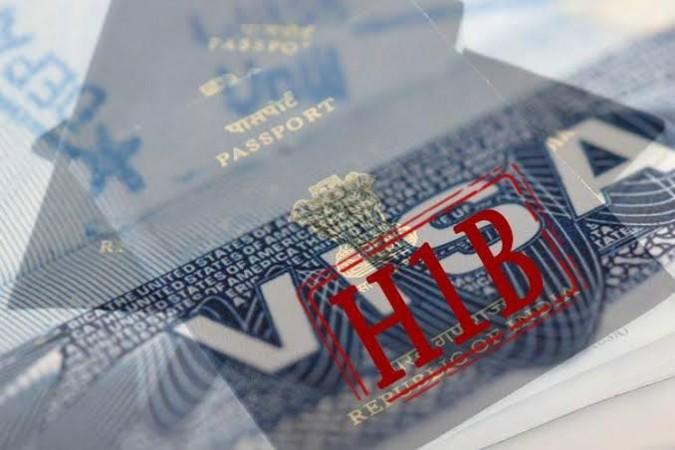
In the crucible of escalating U.S.-India trade tensions, President Donald Trump's September 20, 2025, proclamation imposing a $100,000 annual fee on new H-1B visa applications has unleashed a seismic jolt. Effective from September 21, this 60-fold surge from the current $1,500-$4,000 fees targets what Trump calls "abuse" of the program, claiming it undercuts American wages and fuels job outsourcing.
For India, the world's preeminent supplier of skilled professionals to the U.S., the impact is profound. Indians hold 71 percent of H-1B visas, powering a migration pipeline that has redefined economic and aspirational landscapes for decades. This analysis explores the cascading effects on India, its industries, and its people, weaving together fresh data, expert voices, and real-time sentiments to reveal a dual narrative of disruption and opportunity for reinvention.
The Policy at a Glance: From Open Door to Costly Barrier
The H-1B program, capped at 85,000 visas annually since 2004, enables U.S. companies to hire foreign specialists in fields like IT, engineering, and healthcare for up to six years. In the first half of FY25, 470,342 registrations competed for these slots, with odds as slim as one in nine. Amazon led approvals with 10,044, but Indian giants like TCS, with 5,505, and Cognizant, among the top 10, command a fifth of issuances. The new fee targets only new applicants outside the U.S., sparing renewals and L-1 visas, yet it effectively slams the door on cost-sensitive hires. A U.S. official's September 21 assurance, "No need to rush back," calmed fears for current holders, but the 12-month limit, extendable, signals a formidable yet temporary hurdle.
This policy dovetails with Trump's "America First" agenda, alongside 50 percent tariffs on Indian goods, framing H-1B as a shield for U.S. wages amid a foreign STEM workforce boom from 1.2 million in 2000 to 2.5 million in 2019. For India, it's both a humanitarian and economic flashpoint, as Foreign Ministry spokesperson Randhir Jaiswal warned of "disruptions to families" and the flow of talent.
Hammering Indian Industries: IT's Margin Squeeze and Strategic Pivot
India's $254 billion IT services sector, drawing 55 percent of its revenue from the U.S., leans on H-1B visas for onsite deployments, though reliance has eased to 3-5 percent of its workforce, with 20 percent onsite and 20-30 percent on visas. The fee threatens to erode margins by 100 basis points or 6-7 percent, with cumulative profit hits of 7-18 percent over three years, equating to a 2-6 percent annual EPS drag. Brokerages like Citi and Jefferies project 4-13 percent profit pressure from higher onsite wages or client pass-throughs, stunting growth amid AI disruptions and global economic headwinds.
Large-cap firms like TCS, with over 50 percent U.S. local hires, and Infosys, 60 percent visa-independent, show resilience, facing minimal 10-20 basis point margin dents through offshoring and local recruitment. Midcaps, however, brace for 10 percent earnings cuts as RFPs stall and subcontracting spikes. Social media reactions capture the shock: "H1B Shockwaves: Midcap IT firms lose $10B in a day," notes investor Jose Paul Martin, while Fortune India highlights flat IT indices against Nifty's 43 percent rally.
Beyond IT, healthcare faces a blow: Indians account for 22 percent of U.S. international doctors, roughly 5-6 percent of total physicians, critical to underserved regions. Engineering and startups risk innovation delays as fresh talent pipelines constrict. Yet, the sector's shift to Global Capability Centers and automation gains momentum, though near-term stock volatility, with Infosys and Wipro ADRs dipping post-announcement, reflects investor unease. Former diplomat Ashok Sajjanhar underscores the stakes: "This is a big setback for the American high-tech industry. Without Indians, filling high-tech jobs will be very difficult."
Indians Adrift: Dreams Deferred and a Brain Drain Reversal
For 1.5 million Indian H-1B holders and aspirants, the fee delivers a crushing blow to the "American Dream." Entry-level coders and STEM graduates, already navigating 1-in-9 lottery odds, now face prohibitive costs, stalling green card paths amid backlogs exceeding 1 million for Indians. Families confront wrenching separations, with social media users sharing "horror stories" of choosing between loved ones and careers. Telangana CM Revanth Reddy urged PM Modi to address it on a "war footing," warning of "unimaginable suffering."
Remittances, $100 billion annually with 20 percent from U.S. tech professionals, could dip 5-10 percent, straining household finances and real estate markets in tech hubs like Hyderabad and Bengaluru. Engineering placements at IITs and NITs may plummet 50 percent as U.S. opportunities fade, per Careers360. Yet, glimmers of opportunity emerge: Returnees are fueling India's startup ecosystem, with social media sentiment shifting to "Thanks Trump, one day India will be superpower." Canada, the UK, Germany, and Australia extend fast-track STEM visas, potentially redirecting $20-30 billion in economic value as talent seeks new horizons.
India's Broader Echoes: Economic Strain and Diplomatic Balancing Act
Nationally, the U.S. absorbs 55 percent of India's $194 billion IT exports; a 7-12 percent contract renegotiation wave could shave 0.2-0.5 percent off GDP, compounding tariff-related drags. Remittances and forex reserves, down to $227.4 billion in U.S. Treasuries by June, face pressure, though gold reserves at 880 tons offer stability. Opposition voices like UP Congress chief Ajay Rai denounce the fee as an "insult to Indians," while a minister retorts, "They're afraid of our talent."
New York talks on September 24 seek concessions, such as increased U.S. oil imports, but stalled sixth-round negotiations signal ongoing strain. Social media amplifies the shift: "Trump's H-1B squeeze is prompting many to eye Canada or Europe," notes AlvaApp, highlighting a global talent realignment.
Options and Imperatives for India
India stands at a pivotal juncture, with strategic imperatives to counter the H-1B shock and harness long-term gains. Diplomatically, leveraging Quad ties and trade talks to secure fee exemptions or caps is critical, potentially offering U.S. agricultural access while preserving Russian oil partnerships. Economically, accelerating "Make in India" for AI, cloud, and GCCs, projected to reach $100 billion by 2030, can absorb returning talent through tax incentives and SEZ expansions. Diversifying migration is urgent: PM Modi's September 23 UNGA push for global talent mobility aligns with Canada's 400,000 annual STEM visas and Germany's Chancenkarte, potentially redirecting 100,000-150,000 professionals yearly.
Domestically, upskilling 1.5 million STEM graduates via NASSCOM's FutureSkills Prime can bolster startups, building on Bengaluru's 12.5 percent startup growth in 2025. Protecting remittances through streamlined NRI banking norms is vital to offset a $5-10 billion dip. Economist Kaushik Basu notes, "South-South corridors can reduce U.S. dependency"; FTAs with ASEAN and Africa could redirect $20 billion in IT services by 2027. India must transform this crisis into a catalyst for self-reliance and global influence.
Navigating the Storm: From Crisis to Catalyst
Trump's H-1B fee hike, alongside tariffs, tests India's strategic autonomy. Short-term pain, margin erosion, job freezes, and family disruptions, is acute, but long-term prospects shine: an accelerated "Make in India" for AI and cloud, a GCC boom projected at $100 billion by 2030, and diversified migration to welcoming nations. As Mohit Khatri observes online, "Skilled workers may choose Canada, but India's tech ecosystem gains." Legal challenges and exemptions may ease the blow, yet the era of affordable U.S. access is over.
This is no mere policy shift; it's a reckoning for India. By channeling its 1.5 million annual STEM graduates inward, the nation can forge a self-reliant tech powerhouse, transforming brain drain into brain gain. As Kaushik Basu might echo in global trade forums, resilience, not retaliation, will shape the decade. The challenge for PM Modi is clear: seize this pivot or risk letting tariffs and fees fracture the Indo-U.S. bridge. In a multipolar world, India's talent is its ultimate currency, to be guarded with vision and resolve.
[Major General Dr Dilawar Singh is an Indian Army veteran who has led the Indian Army's Financial Management, training and research divisions introducing numerous initiatives therein. He is the Senior Vice President of the Global Economist Forum AO ECOSOC, United Nations and The Co President of the Global Development Bank.]

















